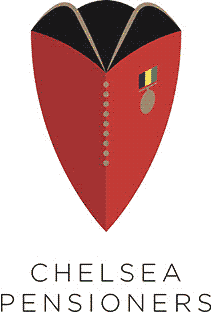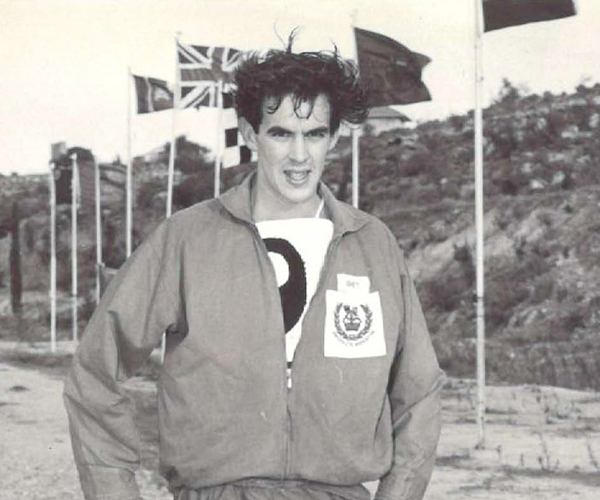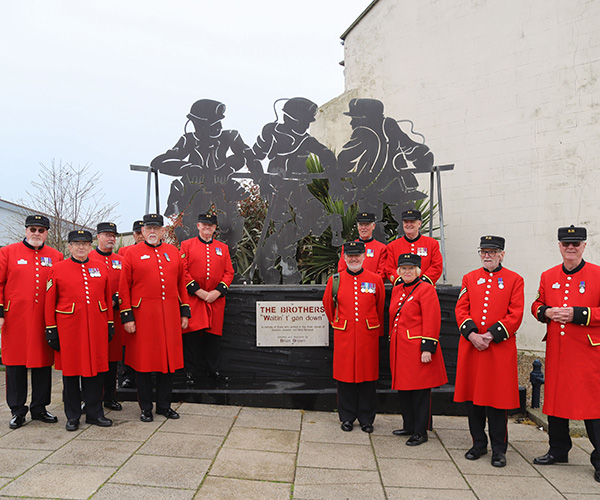Whether you have been lucky enough to visit our Great Hall in person, or have experienced its grandeur by watching our virtual tours, it's difficult not to be impressed by the imposing mural that adorns the back wall where Pensioners take their meals.
While some may have had a chance to see the mural, many will be unaware of its history and it's hidden symbolism and significance. Here we bring to light some of the interesting facets which make this piece of art so important.
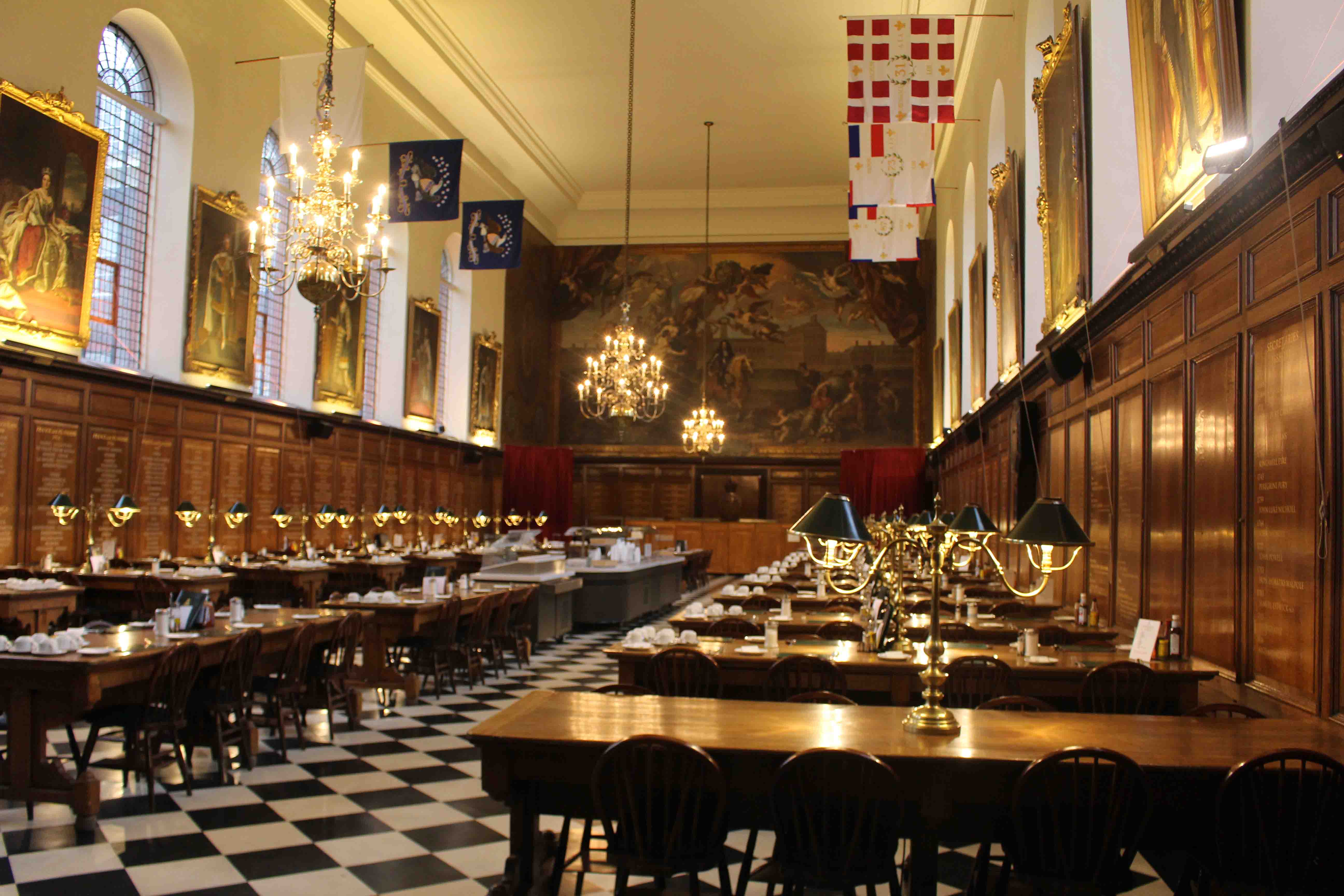
The Great Hall modern photograph
Dating from around 1690, the mural depicts the Royal Hospital Chelsea’s founder King Charles II on horseback, surrounded by allegorical figures and set against the backdrop of our historic buildings. It was painted by Italian artist Antonio Verrio (c.1639-1707) and English artist Henry Cooke (1642-1700) and is a fine example of late 17th century Baroque mural painting.
The escutcheon at its base bears a Latin inscription which, when translated, reads:
Richard Jones Count of Ranelagh put up this painting to King Charles II, most merciful lord and founder of this hospital.
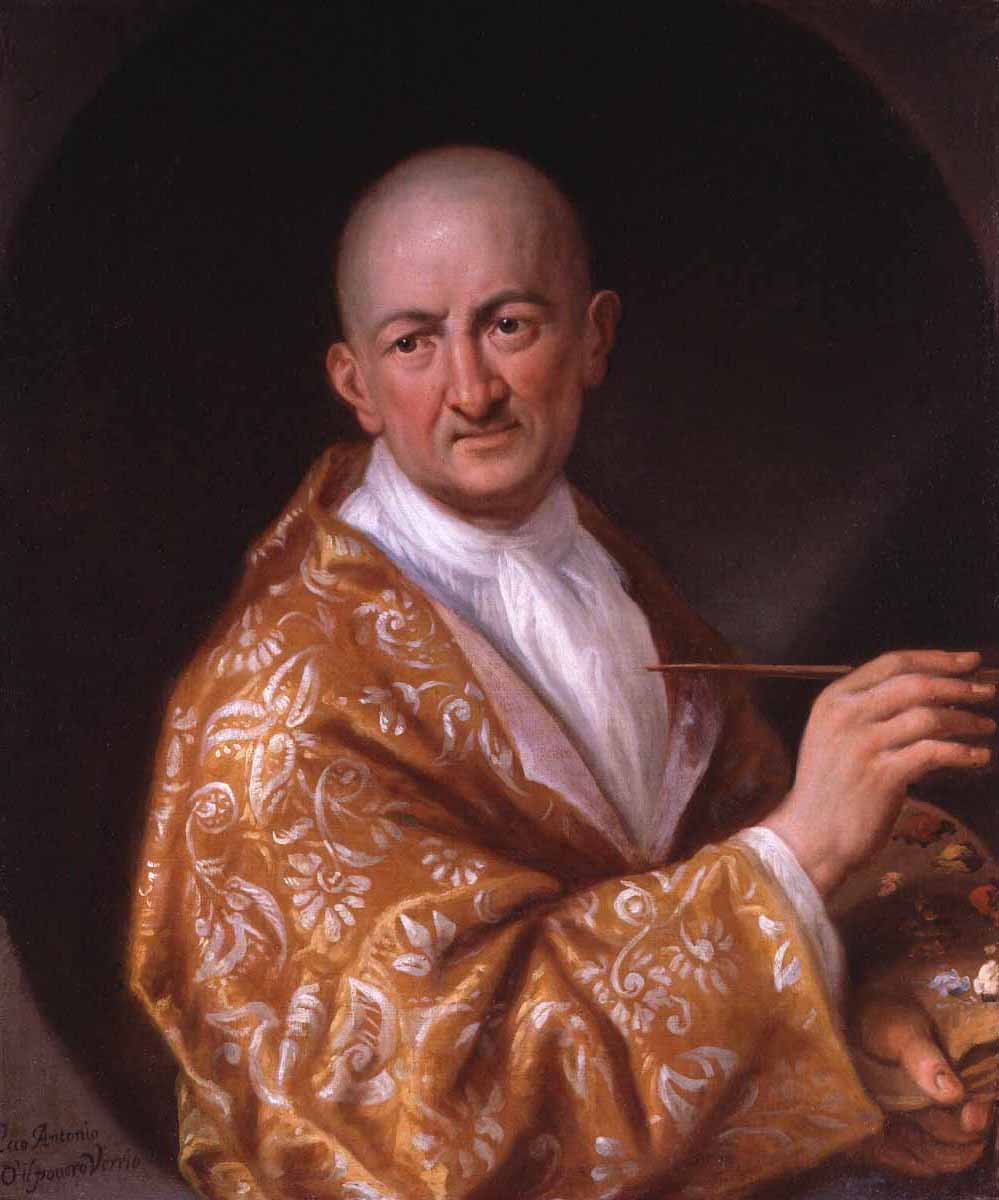
Antonio Verrio by Antonio Verrio © National Portrait Gallery, London
Baroque mural painting
Antonio Verrio was the first artist credited with introducing Baroque mural painting to England. Arriving from Italy in 1672, Verrio soon acquired the royal patronage of King Charles II and went on to paint vast Baroque wall and ceiling paintings at Whitehall and Windsor Castle.
Verrio was one of many European artists who came to England following the Restoration in order to satisfy the demand for lavish Baroque paintings in royal palaces and aristocratic residences, which were considered to be the cultural centres of society. The development of Baroque mural painting in the 17th century was also encouraged by the surge in building enthusiasm engendered by the Counter-Reformation.
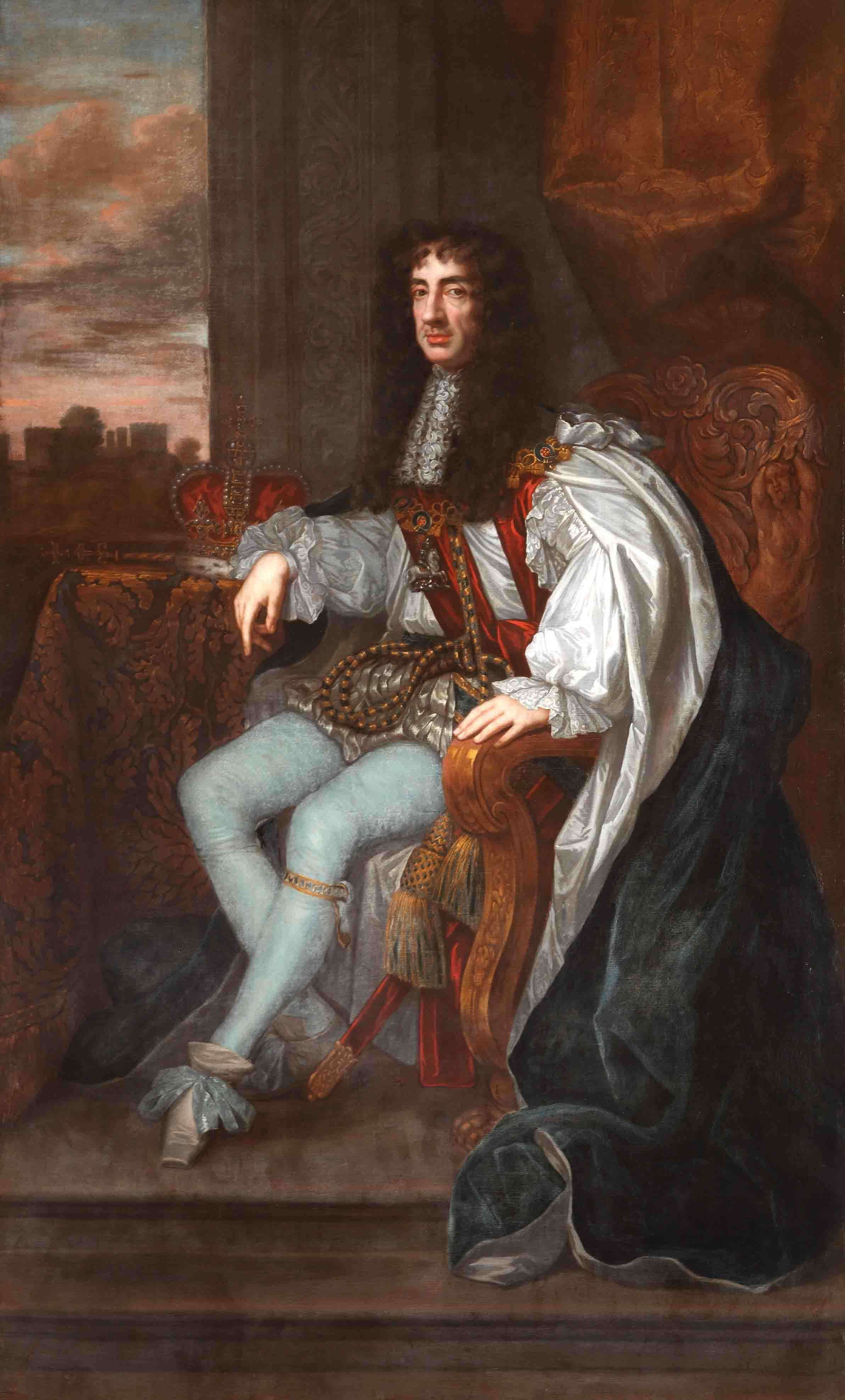
Charles II - © Royal Hospital Chelsea
Communicating power
Art has been used by monarchs and other prominent or wealthy individuals for centuries as a way of communicating their power. It is common for portraiture to feature objects with symbolic meaning, or that allude to an individual’s occupation or hobbies. According to the Royal Collection Trust:
At the Restoration court, art and power were inseparable
Following the English Civil War (1642-1651), the execution of King Charles I, and a short period of Parliamentarian rule, King Charles II sought to reassert the position of the Crown and establish his personal power. As a result, the restoration of the monarchy resulted in a resurgence of the arts in England. A stark contrast to the austere rule of Oliver Cromwell (1599-1658), Charles II assembled an impressive collection of artworks and sought to ‘transform his court into a hub of artistic patronage’ (Katz, 2017). They Royal Collection Trust adds:
Art in all its forms played a crucial role in expressing and legitimising the authority of the restored monarchy following a period of extreme social and political upheaval.
Allegorical figures
The mural features several allegorical and mythological figures of strength and virtue, intended to emphasise the King's supreme rule. Putti pull back billowing red curtains to reveal King Charles II as the painting’s central figure. Easily confused with cherubs, which are associated with Biblical and sacred symbolism, putti were usually secular figures. However, in the Baroque period, they came to represent the omnipresence of God. Indeed, their presence in this mural is perhaps an allusion to the ‘divine right’ of kings. A guiding principle of the Anglican Church following the Restoration, it was a political and religious doctrine which asserted the legitimacy of the monarchy and its accountability solely to God. It is encapsulated by the motto of the British monarchy, which survives today: ‘Dieu et mon droit’, or ‘God and my right’. King Charles II is presented here in armour and on horseback, echoing Sir Anthony van Dyck’s (1599-1641) celebrated equestrian portraits of his father, King Charles I (now in the National Gallery, Royal and Louvre collections).
Other allegorical figures include Father Thames, depicted holding a cornucopia symbolising abundance and nourishment, and Lady Justice who appears with a sword and balance. Often depicted wearing a blindfold to represent impartiality, her sword is an embodiment of the ancient symbol of authority and conveys the idea that justice could be swift and final.
Figures personifying four global regions appear bearing objects considered at the time to be representative of their people, landscapes and cultures; Africa wears an elephant’s trunk headdress, America is adorned in feathers and holds a bow, Europe holds a cornucopia of fruit and flowers, and Asia carries what appears to be a setsquare.
Restoration
Restorative work on the mural in 2002 uncovered some previously unknown details about its creation. An inconspicuous signature, identified as that of Flemish Baroque artist Gerard Lanscroon (1655-1737), was discovered on the wing of a cherub. Further investigation revealed that Lanscroon worked as Verrio’s assistant before embarking on his own career as a muralist, decorating both Arnos Grove House and Broomfield House in London.
The mural features prominently in artistic representations of the Great Hall from different periods of the Royal Hospital’s history, and its restoration ensures that it will consider to be an enjoyed by new generations of Chelsea Pensioners, and visitors alike, for years to come.
